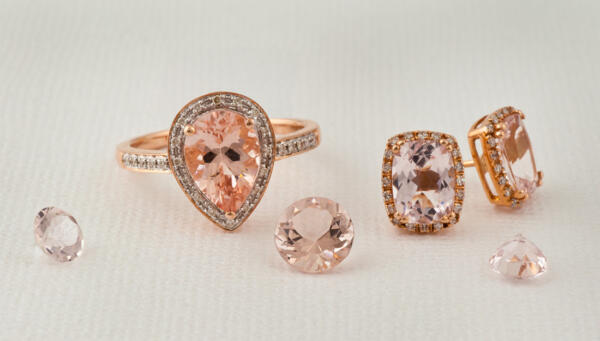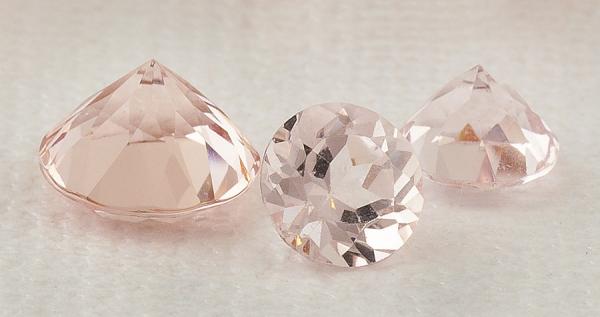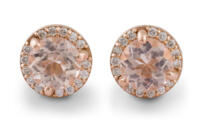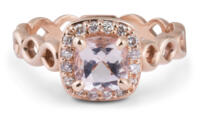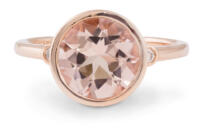Gem in the Spotlight: Morganite
Pretty in pink! Learn all about this beautiful gemstone
Morganite is a beautiful, soft pink gemstone and a graceful expression of elegance. It is not a very well-known gem, but it definitely should be.
It is pastel or pale in color by nature and known for its transparent peach-pink hue though it also occurs as soft pink, violet-pink, or pale salmon. It is the subtle, understated nature of Morganite’s color that sets it apart from many of the more popular gemstones.
Morganite has an impressive family tree. It is a beryl gem which puts it in the same family as emerald and aquamarine. Because of its association with emerald it is sometimes called “Pink Emerald”. Other names for Morganite are “Pink Beryl”, “Rose Beryl”, and “Cesian (or caesian) Beryl”. “Cesian” refers to the presence of the mineral Cesium which, along with manganese, contributes to the pink color of Morganite.
Morganite was known as Pink Beryl until George F. Kunz, the chief gemologist at Tiffany & Co., suggested to rename the gem Morganite in honor of the legendary financier and gem collector J. P. Morgan. The New York Academy of Sciences in December 1910, named the pink variety of beryl “Morganite”.
It has good hardness, durability, luster, and brilliance which make it a great gemstone for jewelry.
For the gem nerds out there, here are a few of the gemological properties of Morganite. Its durability is rated as excellent. Its hardness is 7.5 – 8.0 on the Mohs hardness scale which is comparable to emerald, topaz, and spinel. Its refractive index is 1.560 – 1.600, and its specific gravity is 2.67 – 2.90. These characteristics help identify Morganite as beryl and distinguish it from other pink gemstones.
Morganite is commonly heat treated to remove yellow and orange hues and to achieve a purely pink stone. This type of enhancement has an excellent stability rating, and the stone requires no special treatment once it has been enhanced.
As you may know, the most important factor in determining the value of a colored gemstone is: color. Morganite of a pure, medium pink color is the most valuable. If the pink color is too light the stone often looks washed out and if the pink is too dark the stone looks too saturated with color and loses its Morganite air.
Compared with many other gemstones, Morganite is a relatively new addition with its first recorded discovery occurring in California in the early 1900s. This means you won’t find any tales of ancient kings wearing Morganite on their crowns or other such legends.
Morganite’s lore and traditions are more focused on gem power. Morganite as a power gem is full of associations. Some believe it to be a powerful stone which facilitates the flow of energy throughout the body due to its ability to bring pure love to the wearer. Morganite is also believed to balance emotions and bring harmonizing fulfillment as it releases any blocks to the channels of energy and love. It is even believed to bring compassion, empathy, self-control, and patience to wearer.
Morganite is usually very clean with excellent transparency and clarity. It has good hardness, durability, luster, and brilliance which make it a great gemstone for jewelry. Its wide range of soft pinkish colors makes it highly desirable as it compliments most skin tones and complexions. It is entirely appropriate for everyday wear, and it can be worn as rings, pendants, earrings, necklaces, bracelets, pins, brooches, or whatever else you can think of.
Morganite is considered very affordable, especially allowing for its rarity. But, it may be hard to find in local jewelry stores as it is still relatively less popular than other gems. Arden Jewelers’ gemologists love Morganite and we keep a good selection at all times. Stop by and check out this unique gem for yourself. Or, checkout our online Morganite collection right here.
